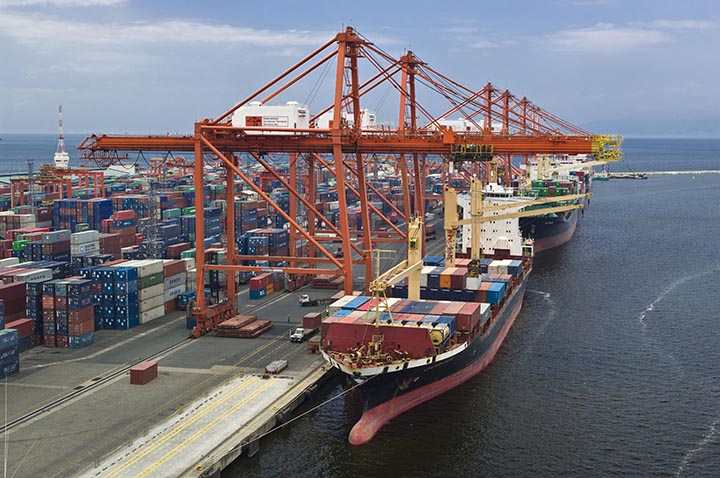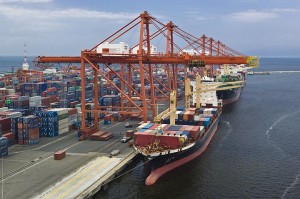

Muted global trade clipped by 35.4% cargo volume handled by Philippine ports in the first nine months of 2015 to 104.671 million metric tons (mmt) from 161.924 mmt in the same period last year, according to latest data from the Philippine Ports Authority (PPA).
Of the total cargo volume handled by ports PPA supervises, foreign cargoes accounted for 55.5% or 58.054 mmt, a 43.9% drop from 103.538 mmt year-on-year.
Domestic cargoes, which contributed 44.5% of the total, likewise declined, dipping 20.2% to 46.617 mmt from 58.386 mmt.
By region, cargoes that went through Luzon ports reached 63.156 mmt or 60% of the total; through Mindanao, 21.882 mmt or 21%; and through Visayas, 19.632 mmt or 19%.
Imports fell 21% to 37.607 mmt from 47.58 mmt, while exports plunged 63.5% to 20.447 mmt from 55.959 mmt last year.
According to the National Economic and Development Authority, the export sector remains constrained by sluggish global demand, low oil prices, and the threat of El Nino for the agriculture sector.
For the third quarter of 2015 alone, cargo volume decreased 44.5% to 32.765 mmt from 59.048 mmt in the same period last year.
Manila International Container Terminal (MICT) remained the country’s biggest cargo handler for the first nine months of the year with 15.914 mmt processed, a 3.4% increment from 15.39 mmt in the same period last year. Manila North Harbour, which handles purely domestic cargoes, followed with 13.603 mmt or a 12% rise from 12.146 mmt in the previous year. Cagayan de Oro, which handled 3.969 mmt in 2015 or 19% higher than last year’s 3.329 mmt, remained in third place.
Container traffic in the first three quarters, on the other hand, increased 8.6% to 4.122 million twenty-foot equivalent units (TEUs) from 3.796 million TEUs in the same period in 2014.
Foreign boxes rose 6.4% to 2.365 million TEUs, while domestic containers improved 11.6% to 1.757 million TEUs from 1.574 million TEUs last year.
MICT again handled the most boxes with 1.45 million TEUs, up 9% from 1.331 million TEUs in the first nine months of 2014. Manila North Harbour likewise maintained its second spot, servicing in the period under review 809,637 TEUs, 7.5% higher than the 753,093 TEUs processed last year. Manila South Harbor placed third with 581,923 TEUs, a 9% growth from last year’s 533,442 TEUs.
Ship calls declined 0.3% to 268,725 vessels from January to September this year from 269,411 ships last year. Of the total, foreign calls accounted for 7,122, down 3.2% from 7,355 last year. Domestic vessels likewise declined 0.2% to 261,603 from 262,056. It must be noted that fewer vessel calls may mean some liners have deployed bigger vessels to call the country’s ports.
Passenger traffic slipped 1.6% to 40.754 million people from 41.428 million last year. — Roumina Pablo




